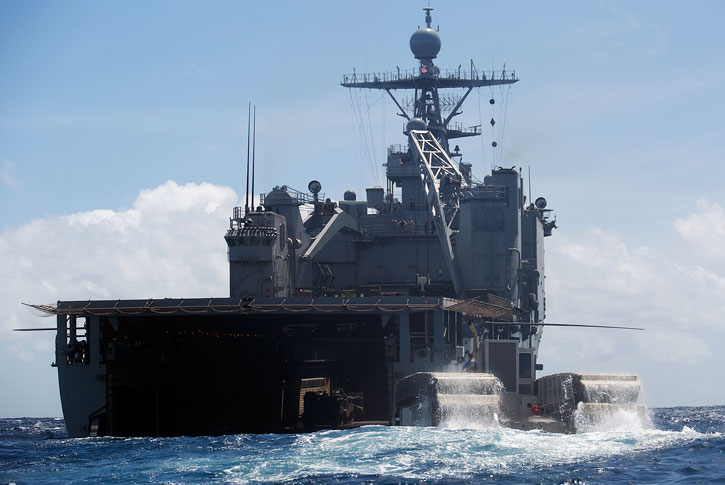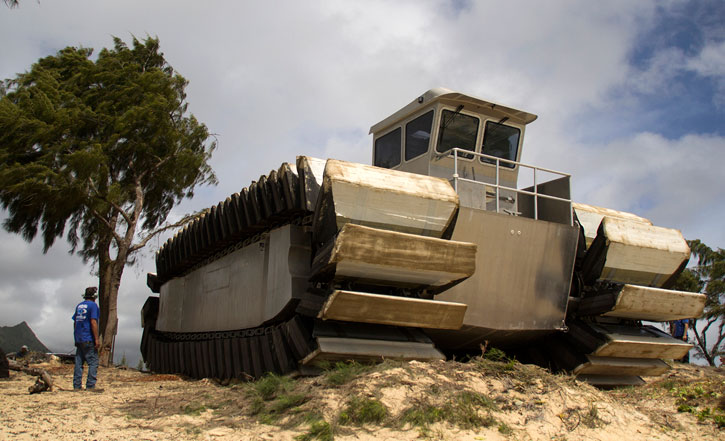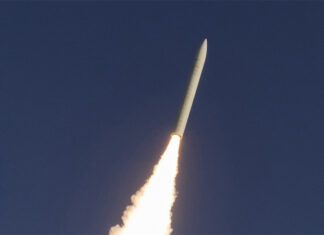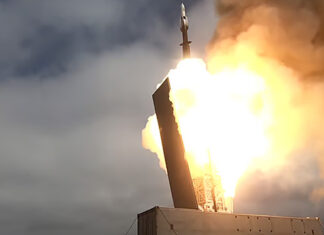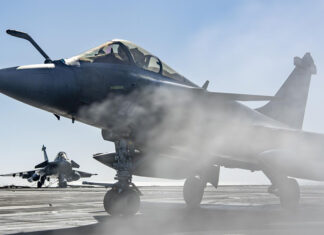
The US Navy and Marine Corps have tested an Ultra Heavy-lift Amphibious Connector (UHAC) prototype during an Advanced Warfighting Experiment undertaken as part of the Rim of the Pacific (RIMPAC 2014) exercise in Hawaii, earlier this month. The UHAC being tested was a half-scale version of an amphibious transport system developed by the Hawaiian company Navatek under an Office of naval Research (ONR) funded program. During the exercise the UHAC departed Marine Corps Training Area the Bellows and made its way to the amphibious dock landing ship USS Rushmore (LSD 47), where it embarked the ship’s well deck. It then picked up and transported an assault vehicle back to shore.

The UHAC is a track driven connector that can reach reasonable water speeds and access beach areas that Landing Craft Air Cushion’s (LCAC) and Landing Craft Utilities cannot. “It has taken a number of years of development to get to this point,” said Dr. Frank Leban, program officer at ONR. “This is actually the third demonstration vehicle in this program. There has been a one-fifth scale model, then a one-quarter scale model and this is a half scale model, so we have been progressing. Every vehicle has incorporated more features and technology to help get us to the full scale. Over the past year the Marine Corps Warfighting Lab has gotten involved and they are looking at trying to put this technology in an operational context. They have been coming up with vignettes and scenarios on how the UHAC can be used.”
The half scale vehicle consists of two tracks that are made out of captured-air foam blocks, which gives the vehicle the propulsion it needs for land and sea travel. The UHAC is intended to be a heavy lift vehicle; the full scale UHAC will be able to carry three times more than an LCAC and can go over more obstacles including 10-foot-high sea walls.
“There was generally some degree of apprehension since it is a new and unfamiliar piece of equipment and how it would operate with the ship,” said Cmdr. Thomas Stephens, commanding officer of USS Rushmore. “At the same time, there was an excitement about being in a position to assist in the development of something significant like UHAC. I saw that excitement and pride on board Rushmore a great deal today. It was awesome to see them so proud of what it is they do so well day in and day out. I’m very proud of my crew’s support to the UHAC endeavor.”
